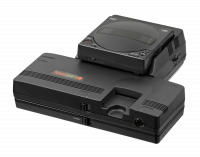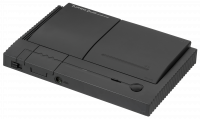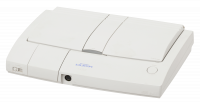TG16:TurboGrafx-16 Mods Wiki: Difference between revisions
No edit summary |
mNo edit summary |
||
| (7 intermediate revisions by 2 users not shown) | |||
| Line 26: | Line 26: | ||
* <s> [[TG16:Creating Game Save Backups]] </s> | * <s> [[TG16:Creating Game Save Backups]] </s> | ||
* [[Applying ROM Patches]] | * [[Applying ROM Patches]] | ||
* [[TG16:Accessory Compatibility]] | |||
* <s> [[TG16:Homebrew Games List]] </s> | * <s> [[TG16:Homebrew Games List]] </s> | ||
</div></div></div> | </div></div></div> | ||
| Line 78: | Line 79: | ||
* <s> [[TG16:Power Supply Fuse]] </s> | * <s> [[TG16:Power Supply Fuse]] </s> | ||
* [[ConsoleMods_Wiki:Cartridge_Cleaning|Game Cartridge / Connector Cleaning]] | * [[ConsoleMods_Wiki:Cartridge_Cleaning|Game Cartridge / Connector Cleaning]] | ||
* [[Replacing Capacitors]] | * [[Replacing Capacitors]] - [[TG16:Capacitor Maps]] | ||
* [[ | * [[TG16:Disc Drive Repair|Disc Drive Repair (Turbo Duo)]] | ||
* [[TG16:Killer Standoff (SuperGrafx)]] | * [[TG16:Killer Standoff (SuperGrafx)]] | ||
</div></div></div> | </div></div></div> | ||
| Line 105: | Line 106: | ||
<li> [[TG16:Super SD System 3]] </li> | <li> [[TG16:Super SD System 3]] </li> | ||
<li> [[TG16:Super HD System3 Pro]] </li> | <li> [[TG16:Super HD System3 Pro]] </li> | ||
<li> [ | <li> [[TG16:Turbo EverDrive]] (and [[TG16:TEOS]]) </li> | ||
<li> [[TG16:DIY Flash HuCard]] [http://www.gamingenterprisesinc.com/Flash_HuCard/ 1] </li> | <li> [[TG16:DIY Flash HuCard]] [http://www.gamingenterprisesinc.com/Flash_HuCard/ 1] </li> | ||
</ul> | </ul> | ||
| Line 127: | Line 128: | ||
<li> <s> [[TG16:Video Cables]] </s> </li> | <li> <s> [[TG16:Video Cables]] </s> </li> | ||
<li> <s> [[TG16:Controller Adapters]] </s> </li> | <li> <s> [[TG16:Controller Adapters]] </s> </li> | ||
<li> [https://stoneagegamer.com/75-ohm-mini-coax-gold-plated-av-cable-for-nec-coregrafx-supergrafx-duo-retro-frog.html Retro Frog Gold AV Cables] </li> | <li> [https://stoneagegamer.com/75-ohm-mini-coax-gold-plated-av-cable-for-nec-coregrafx-supergrafx-duo-retro-frog.html Retro Frog Gold AV Cables] </li> | ||
<li> [https://console5.com/store/console-cap-kits/nec.html Capacitor Kits] </li> | <li> [https://console5.com/store/console-cap-kits/nec.html Capacitor Kits] </li> | ||
<li> [https://github.com/Board-Folk/PC-Engine-Duo PC Engine Duo Replacement Motherboard Project] </li> | |||
<li> [https://www.ebay.com/itm/195999858778 PSone LCD Adapter] </li> | |||
</div> | </div> | ||
|} | |} | ||
</div></div></div> | </div></div></div> | ||
Revision as of 21:02, 28 February 2024
The PC Engine/TurboGrafx-16 is an 8-bit console from the fourth generation of video game consoles. Designed by Hudson Soft and manufactured and sold by electronics giant NEC, the console was initially released in Japan as the PC Engine on October 30th, 1987 and was released in North America (August 29th, 1989) as the TurboGrafx-16, followed by a limited European release as the TurboGrafx in 1990. The console used small credit card-sized cartridges known as HuCards and was also the first console to play games on optical media via a CD-ROM expansion, first released in 1988. It was also the first console to have a handheld variant — the TurboExpress — which could play the same games as the home consoles. At least 17 different model variations were released, with the most significant models being part of the TurboDuo (or PC Engine Duo) line which incorporates the CD-ROM² add-on directly into the hardware. Although it was a success in Japan, the console saw sluggish sales in North America and was discontinued there by 1993. NEC and Hudson would unsuccessfully follow up on the PC Engine with the 32-bit PC-FX in 1994, but the PC Engine continued to see releases in Japan until 1999.
Flash Carts |
3D Printables |
Replacement Parts |
Other |







